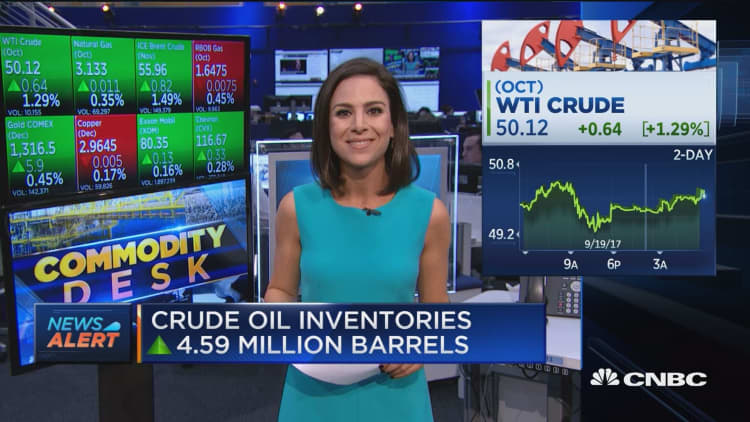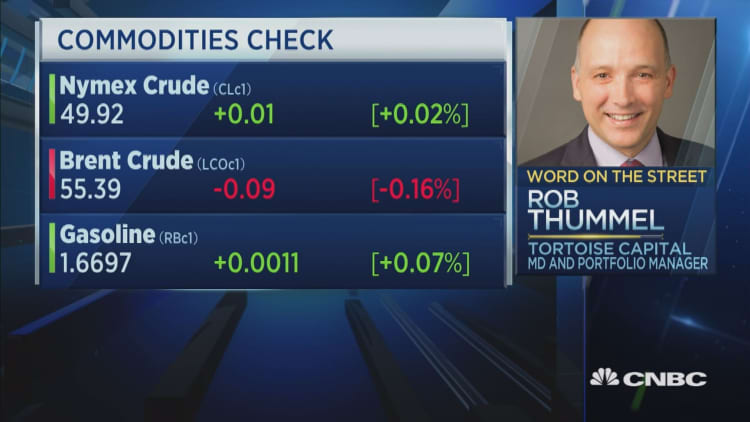
Oil prices rose 2 percent on Wednesday, despite a rise in U.S. crude inventories, after the Iraqi oil minister said OPEC and its partners were considering extending or deepening output cuts.
U.S. West Texas Intermediate (WTI) crude futures ended Wednesday's session up 93 cents, or 1.9 percent, at $50.41 a barrel. That marked the best closing level going back to May 24.
Brent crude futures were up $1.15, or 2.1 percent, to $56.29 a barrel by 2:29 p.m. (1829 GMT). They having struck the highest intraday level since April 12 and were closing in on the 2017 high of $58.37.
U.S. crude oil stockpiles jumped last week as imports and production increased, the U.S. Energy Information Administration said, as operations resumed from the impact of Hurricane Harvey which hit the Gulf Coast on Aug. 25.

Crude inventories rose for a third straight week, building by 4.6 million barrels, about a million more barrels than forecast.
"The impact of Hurricane Harvey can still be seen in todays larger-than-expected build in the U.S. commercial crude stockpile," said Abhishek Kumar, Senior Energy Analyst at Interfax Energys Global Gas Analytics in London, "However, this has had limited impact in dissipating the bullish sentiment prevailing in the market.
Gasoline stocks fell 2.1 million barrels, in line with analysts' expectations while distillate stocks inventories fell 5.7 million barrels, the biggest weekly draw since November 2011.
Refinery activity recovered slightly but remained subdued in the aftermath of Hurricane Harvey, which knocked out about a quarter of U.S. refining capacity. Refinery crude runs rose by 1.1 million barrels per day, according to EIA. Refinery utilization rates rose by 5.5 percentage points.
Crude prices were little changed after the U.S. Federal Reserve left interest rates unchanged and announced it will begin reducing its balance sheet in October, a key part of unwinding its long-standing easy money policy.
On Friday the Organization of the Petroleum Exporting Countries and other producers meet in Vienna to discuss the progress of their deal to limit output.

The group is considering a range of options, including an extension of cuts, but it is premature to decide on what to do beyond the agreement's expiry in March, Iraqi oil minister Jabar al-Luaibi told an energy conference on Tuesday.
OPEC and non-OPEC producers including Russia have agreed to reduce output by about 1.8 million barrels per day (bpd) until March to reduce global oil inventories and support prices.
Some producers think the pact should be extended for three or four months, others want it to run until the end of 2018, while some, including Ecuador and Iraq, think there should be another round of supply cuts, al-Luaibi said.
"There's been some general support on that upcoming meeting," said Tony Headrick, energy market analyst at CHS Hedging.
"The market will be monitoring that closely, to see if they're including Nigeria and Libya," he said, "Cuts have been relatively well implemented recently and early thoughts are that theyre going to maintain those cuts."
— CNBC's Tom DiChristopher contributed to this report.

